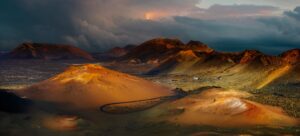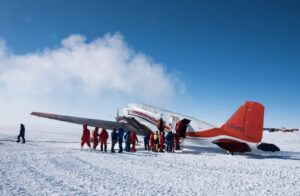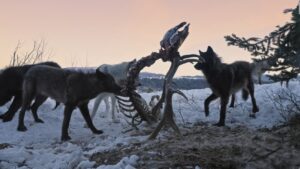They call Labrador “The Big Land.” And is it any wonder why? The region comprises 71% of the province of Newfoundland and Labrador’s landmass but holds only 6% of its population. A largely roadless boreal forest shares the landscape with glistening lakes, rivers, and streams watered by brutal winters.
And in these waters swims North America’s biggest brook trout.
It’s an animal the makers of Big Land — a fly fishing film created in conjunction with Old Town Canoe and Orvis — call “the most beautiful of all freshwater fish.”

A beautiful fish: the brook trout. Photo: Shutterstock
“As the very first game fish encountered by the settlers, it’s easily argued that there’s no more quintessentially American fish than the brook trout,” Big Land‘s co-director and narrator Chase Bartee intones. “Yet apathy, poor management, and destructive practices are on track to see it disappear entirely from the landscape. Though a nuanced issue, one undeniable truth about the health of brook trout populations throughout the east is that where people go, destruction is sure to follow.”
A brook trout nirvana
And that’s why Chase, his co-director and wife Aimee, fishing guide Chris Sinclair, and whitewater guide Dylan Markey chose it as their perfect spot for a two-week brook trout fishing expedition. Labrador is one of last fisheries in North America to support a robust, thriving brookie population that creates big fish.
It is, as Chase says in the film, a “brook route nirvana.”

Getting to Labrador is no easy task. Photo: screenshot
But getting there is a journey, especially if you’ve never paddled a canoe before. Big Land’s opening minutes follow Chase and Aimee as they gather gear, learn to paddle, and enlist the help of their two guides. Then it’s thousands of miles of travel by car, ferry, train, and float plane to reach their destination in the heart of Labrador.
Empty-handed
Like most expeditions, very little goes according to plan. Chris cuts his hand badly while splitting firewood. At one point, the group finds itself pinned down on a small island for three days by a powerful storm, chaffing at the stagnation of their journey. And worst of all, they struggle to catch any fish. Initially wracked by doubt and frustration, the expedition paddles up and down the waterways looking for a bite.
“Every new corner we turned, our hopes would rise with the prospect of finding fish. But time and time again, we came up empty-handed,” Chris narrates.

Chris paddling a canoe in Labrador. Photo: screenshot
But as tends to happen when people immerse themselves in the wilderness, concrete concerns slowly give way to nuanced notions of spirituality and connection to the land.
“We’d started fishing less during our pit stops and marveling more at the outstretched country in front of us,” he says against a backdrop of stunning Canadian scenery.
Chris is an accomplished watercolorist in addition to being a filmmaker, and he shoots the landscape and fish they (eventually) find with an artist’s eye. Gorgeously rendered shots of brookies glide across the screen with liquid grace. Mist hovers over the water. Morning frost adorns the canoes. It’s all beautiful, even the insects clotting the air around the paddler’s faces.

Not bad. Photo: screenshot
Big Land comes with an important conservation message, but at its heart, it’s a film about the simple beauty of fishing for a beautiful fish. And as the film draws to a close, it leaves the viewer with the hope that somewhere out there, there are still large tracts of wilderness left to journey in.

Still lots to explore. Photo: Screenshot
“Having explored only a drop in the vast ocean of the province’s fresh water, there was really only one question left,” Chris says just before the screen cuts to black. “Where to next?”






